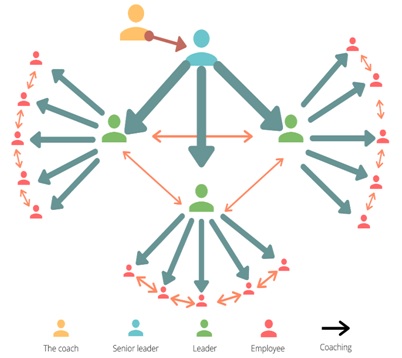Research Paper By Rudy Shukri, Performance Improvement Coach, CANADA
This paper is about exploring how leaders of today can generate sustainable performance improvement by adopting and spreading a coaching culture.
The persistent VUCA (volatile, uncertain, complex, and ambiguous) times we live in, keeps pushing leaders to look for different ways to sustain and/or grow their businesses. Business strategies such as cross-selling, innovative new products, digitization, technology tools, product differentiation, digital marketing, and pricing strategies, have become exhausted. Everybody is doing the same things with simply different flavors. Some have also tapped into the human potential by adopting knowledge and skills transfer through blended learning, team-building activities, and the likes. This, unfortunately, was followed by another major challenge, employee retention. The very same employees who have been working on those business strategies and have extensive experience are leaving.
In fact, Jane Their, in her article “How can CFOs Curb Turnover Rates?” (2020), mentioned that a staffing firm, called Accountemps, reported in 2020 that 63% of CFOs they researched mentioned that the costliest aspects of employee turnover are productivity (29%), recruiting (25%), and new hire training (26%). This is one of the indicators that turnover has a big impact on business performance.
What is really affecting the levels of employee turnover?
 Leadership Coaching: The right person for the right job
Leadership Coaching: The right person for the right job
One reason is hiring the right person for the right job. The human resources industry keeps improving the efficiency and effectiveness of the hiring, onboarding, and talent development processes by using artificial intelligence and automation. Companies have also used many hiring strategies to attract candidates. That includes public sharing of the company culture, the successes, employee testimonials, featuring employees, hosting internal events, and the likes.
A study was made on “The Importance of Developing Strategies for Employee retention” published in the Journal of Leadership(2015), accountability and ethics, which mention the concept of “fit” between the organization, the person, and the job. They say the person must feel a positive fit during both the hiring process and the employment. When this type of fit is not present, then the employee seeks alternate employment.
Another reason, and our focus here, is related to Maslow’s hierarchy of needs.
Maslow’s Hierarchy of Human Needs
As per Maslow (1987), people are motivated by five levels of needs, the highest being the self-actualized person. To get there, one needs to fulfill the Physiological, Safety, Love, and Belonging, and Esteemneeds consecutively. If those needs are not met, people leave for what is called a “better opportunity”.
Many successful people have reached this level, many of them are business leaders, and many of those are often arrogant, and self-important as per Tomas Chamorro-Premuzic(2019) in his book: Why Do So Many Incompetent Men Become Leaders? (And How to Fix It). They do not shy away from any method to reach their own objectives.
This creates a diminishing environment that either creates “mini me’s” or drives talent away at the first opportunity as per Liz Wiseman/Greg McKeown (2010) in the book Multipliers. Both of which are seen as obstacles to performance improvement.
Those leaders who created the diminishing environment are referred to as Diminishers and the authors stated that leaders need to be Multipliers instead.
Diminishers vs Multipliers
In their book, they proclaim a distinct difference between the Diminishers and the Multipliers’minds. Diminishers assume that people will never figure anything out without them while Multipliers assume people are smart and will figure things out on their own. The ICF, in their updated Core Competency Model (2019), sees this frame of mind as part of a Coaching Mind-Set.
With this mindset, Diminishers’ behavior will create an environment that could underutilize talent, suppresses people’s thinking and capabilities, showcases how much they know, or confuses the organization by making centralized and abrupt decisions.
Some Diminishersmight has had the Multiplier mindset but working among Diminishers for so long, they have adopted many of the Diminishers’ practices and, in turn, they pass them, and consequently, it became the culture. We are not talking about the publicly shared one, this is the real one.
Culture eats strategy for breakfast. Peter Drucker
To summarize, VUCA times have exposed performance gaps that are linked to areas of improvement in leadership. These improvement areas point to the root cause of how to bring people to their self-actualization levels. To reach that level, one needs the right environment. For leaders to create the right environment, they need to lay the right organizational culture. Hence, if we improve the organizational culture, we can improve performance.
Every improvement strategy starts with knowing the current situation. “You can’t manage what you can’t measure”, a quote attributed to both Peter Drucker and W. Edward Denning.
Can we measure culture?
How to measure culture?
In his book“Coaching for Performance”, Sir John Whitmore (2017) introduced the Performance Curve. It focuses on the collective mindset of the culture and how it creates the conditions for performance.
Sir John Whitmore defined four stages on the culture spectrum. Leaders can choose to change by reflecting on the current mindset within the organization (and the teams)and the link between mindset and performance.
Below are the four stages and their attributes.
Impulsive
- High interference, low potential.
- “Whatever happens, happens”.
- Low performance
This is where the organization keeps fighting fires and hides behind the limited communication levels and engagement strategy. As for the team members, it is a matter of keeping their heads low and just survive.
 Dependent
Dependent
- Interference is medium-high, the potential is medium-low.
- “I follow the rules and do what I am told”.
- Low-medium performance
The organization focuses on stability and team members focus on task completion (sense of the need to belong). One way communication and varying levels of recognition are present.
Independent
- Interference is medium-low, the potential is medium-high.
- “I am a high performer”.
- Medium-high performance
The independent mindset is characterized by the high responsibility for own performance. The organization supports the individual. The individual has the achievement mentality with more focus on own objectives, not the organizations.
Interdependent
- Low interference, high potential.
- “We are truly successful together”.
- High performance
Strong sense of ownership and a belief that high performance can only be achieved by the group. High levels of engagement, trust, care, and collaboration.
One organization may find itself at more than one of the stages among different groups. As long as the leaders explore the mindsets with an open mind, measurement can happen.
Using this tool, leaders can measure the current cultural situation and take the steps towards performance improvement by creating a coaching culture.
Creating the coaching culture
 It all starts with the leaders
It all starts with the leaders
Studies done by Ferry K. at the Hay Group (2016) among others show that leadership behavior affects bottom-line performance by up to 30%.
The concept is to start with the leaders.
The coach coaches the senior leader, the senior leader, in turn, coaches the leaders, the leaders coach each other (cross coaching) and their team members, and the team members coach each other.
It is expected that not all team members would be ready to be coached. The success of the culture change depends on choosing the right people to start with.
Choosing the right people
As mentioned earlier, the aim is to have the team reach the self-actualization level.
To do that, one needs to answer the following two main questions:
- Are they coachable? Do they have the behavior and personality for that?
- Do they want to be coached? Are they open-minded and committed to that?
Are they Coachable: Behaviors and Personalities – MBTI
One of the tools that could help answer this question is the Myers-Briggs Types Indicator (MBTI). The MBTI is an introspective self-report questionnaire indicating differing psychological preferences in how people perceive the world and made decisions. If the leader understood how his team perceived the world and make decisions, there is a better chance of choosing the right people to start with.
16 different personality types are a mix of four categories:
(I)ntroversion or (E)xtraversion
(S)ensing or I(n)tuition
(T)hinking or (F)eeling
(J)udging or (P)erceiving
From the 16 MBTI types, there are5 types that are the most open-minded:
INTPs are open-minded however because they are logical, they consider all logical perspectives and that leads to delay in decision making.
INFPs are also open-minded however, they have challenges making social choices due to the number of options available. They are very understanding.
ENTPs are willing to think anything, they have great understanding, but they are rather too open-minded.
ENFPs are willing to do pretty much anything, they are so open-minded that they can land themselves in trouble.
INFJs are exceptionally open-minded because of their incredible empathy/compassion for others.
By looking at the MBTI results, choosing the right people to coach could be facilitated.
Another tool to help answer the question: Are they coachable, is the Enneagram.
Are they coachable: Behaviours and Personalities – Enneagram
Enneagram is a framework for understanding personality types. It highlights dominant traits of someone’s character as well as underlying fears and motivations.
There are nine personality types, and one person can be a mix of two or more types:
Type 1: The Reformer.
Type 2: The Helper.
Type 3: The Achiever.
Type 4: The Individualist.
Type 5: The investigator.
Type 6: The Loyalist.
Type 7: The Enthusiast.
Type 8: The Challenger.
Type 9: ThePeacemaker.
From the above list, 3 types are the most open-minded:
Type 1: The Reformer
The Reformer wants to strive higher and improve everything however they can be perfectionists and opinionated about everything.
Type 3: The Achiever.
The Achievers are success-oriented, adaptive, driven, and want to impress others. This type will give everything to succeed in new projects. However, they could become arrogant if they succeed and relentless and vindictive if they fail.
Type 9: The Peacemaker
The Peacemakers want to create harmony, avoid conflict and they always find the balance to preserve things as they are. However, they could become disoriented and consequently procrastinate.
Any mix of the 3types with the other 6 types could also turn successful as long as the 3 types are dominant.
Both MBTI and Enneagram choices of right people are based on my opinion, and leaders, following the concept, might have a different opinion. It is their choice eventually.
As per the above-mentioned tests, some people might be coachable based on their personality traits, however, do they want to be coached?
Do they want to be coached?
Nick Leighton in his 2021 Forbes article (Add reference) “Am I coachable” listed a few questions for people to ask themselves to see if they are coachable:
- Am I too proud or embarrassed to ask for help?
- Can I fit a coach into my schedule?
- Am I open to honest, constructive criticism?
- Can I really do everything on my own?
If the answer to the above is yes, then the person is willing and committed and, therefore, wants to be coached.
Once coachability is confirmed by answering the two main questions, then the coaching begins.
The ICF defines coaching as partnering with clients in a thought-provoking and creative process that inspires them to maximize their personal and professional potential. There are many coaching models one can use. I have chosen to follow my own Performance Improvement Coaching model in this paper.
Performance Improvement Coaching Model
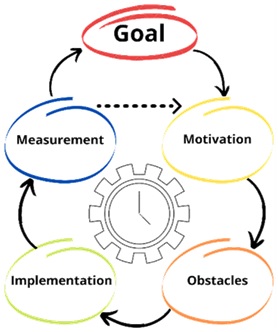
Throughout this journey, the coach brings in curiosity, rapport, open-mindedness, and, last but not least, empathy.
The coach helps the coaching partners start with the end in mind by discovering their big goal, articulating the motivators and obstacles, designing the implementation plans, measuring the results, and finally reflecting on the outcomes.
Just like life, this journey is a cycle, every step has a goal, and every goal is unique.
Below are the details of the coaching model that can be used by the leader as well as others to help create the coaching culture.
Goal:
People with goals succeed because they know where they are going. Earl Nightingale
A great quote by Mr. Nightingale, however, what seems to be a clear goal could sometimes be just a stepping stone to another goal.
The coaching journey begins with the intent to know more, build rapport, and create a safe environment for the coaching partners.
With curiosity and openness, the coach helps the coaching partners peel the onion to reach the core, the vision, the goal.
To reach the goal, we need to know where we stand. With complete openness and transparency in mind, the coaching partners are assisted by the coach to assess the current situation and share where they really stand.
Motivation:
All of our dreams can come true if we have the courage to pursue them.Walt Disney
In a few words, this step is to articulate the “Why” and “Why Now”.
The coach helps the coaching partners find what motivates them, what fuels their drive towards their steps and goals, and what gives them the courage to be the best.
Obstacles:
An obstacle is often a stepping stone. Prescott Bush
Our lives are mixed with ups and downs, successes and failures driven by internal and external forces that continuously push and pull.
In this step, the coach shines a brighter light on those obstacles and helps the coaching partners dissect them, understand them, face them, eliminate/modify/overcome them, learn from them, and finally, make them steppingstones.
Implementation:
It’s not the ideas; it’s design, implementation, and hard work that make the difference. Michael Abrash
Now, the coaching partners have a big goal, have what fuels courage, and can see the obstacles as steppingstones. It is time to break the goal down into smaller SMART goals.
The coach uses this step to help the coaching partners define the path needed by starting with the big goal, figuring out what is needed to reach that step, and working backward until the current situation is reached.
Each step becomes a goal by itself and, by using the SMART methodology, leaders would have a crystal-clear path that is Specific, Measurable, Attainable, Realistic, and Time-bound.
After the implementation of the first goal, a measure of the outcomes is due.
Measurement:
Measurement is the first step that leads to control and eventually to improvement. If you can’t measure something, you can’t understand it. If you can’t understand it, you can’t control it. If you can’t control it, you can’t improve it. James Harrington
Gaining control of your path can only happen with measurement. Whether it was a positive or a negative outcome, reflecting on the results will bring lifelong lessons. With learned lessons comes progress!
In this step the coach supports the coaching partners to verbalize the lessons learned and how those lessons would be used in the future.
The process is repeated for the subsequent steps or goals until the big goal is reached.
Adaptability
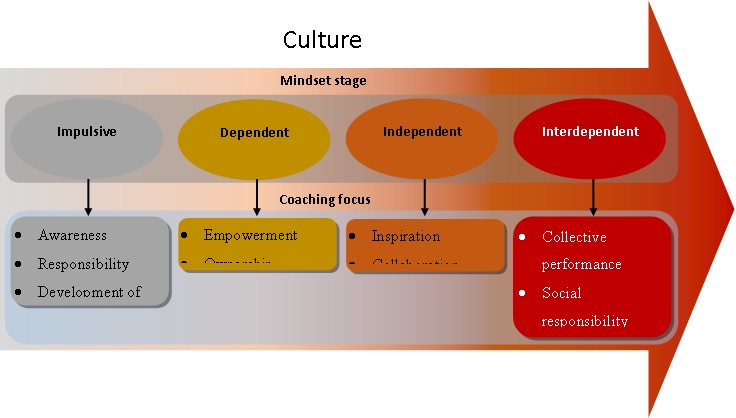
For example, if the mindset is found to be impulsive, working with the person on awareness, responsibility, and the development of self-management skills brings better results.
To summarize, the following steps can be taken to instill a coaching culture that improves performance:
- Set the goal.
- Measure the current situation (the mindset stage the team is at).
- Choose the right people.
- Enjoy the journey (through the coaching model).
- Repeat
With every goal reached, the collective performance improves, leading to momentum build-up, and consequently, culture change.
In conclusion, a leadership coaching style can improve and sustain performance improvement by creating a coaching culture. Once the situation is measured and the right people are chosen, coaching would be a favorable process, as it brings out not only the “what” to do, “how” to do it, and “why” to do it, but also the intention, the rapport, and the openness across the board. All that is needed is to trust the process and enjoy the journey.
References
Type Descriptions. The Enneagram Institute. (n.d.). https://www.enneagraminstitute.com/type-descriptions/.
The Myers-Briggs Foundation – MBTI® Basics. (n.d.). https://www.myersbriggs.org/my-mbti-personality-type/mbti-basics/
Whitmore, J. (2017). Coaching for performance: the principles and practice of coaching and leadership. Nicholas Brealey Publishing.
Wiseman, L. (2017). Multipliers: how the best leaders make everyone smarter. HarperBusiness, an imprint of HarperCollinsPublishers.
McGuire, K. J., & Maslow, A. H. (2011). Maslow’s hierarchy of needs. GRIN.
Ferry, K. (2016). Leaders are grown, not born. Hay Group. http://infokf.kornferry.com/rs/494-VUC-482/images/KFHG-Leaders%20are%20grown-Fact%20sheet.pdf.
Leighton, N. (2021, February 12). Council Post: Am I Coachable? Forbes. https://www.forbes.com/sites/forbescoachescouncil/2021/02/16/am-i-coachable/?sh=5851be9a5da2.
Cloutier, O., Flelusiak, L., Hill, C., & Pemberton-Jones, E. J. (2015). The Importance of Developing Strategies for Employee retention. http://www.m.www.na-businesspress.com/JLAE/Pemberton-JonesEJ_Web12_2_.pdf.
Chamorro-Premuzic, T. (2019). Why do so many incompetent men become leaders? (and how to fix it). Harvard Business Review Press.
Thier, J. (2020, February 12). How can CFOs curb employee turnover rates? CFO Dive. https://www.cfodive.com/news/curb-employee-turnover-rates/572204/.
Maslow, A. H. (1987). Motivation and Personality (3rd ed., revised by R. Frager, J. Fadiman, C. McReynolds, & R. Cox), New York: Harper & Row.
The Gold Standard in Coaching: ICF – Core Competencies. International Coaching Federation. (2019). https://coachingfederation.org/core-competencies
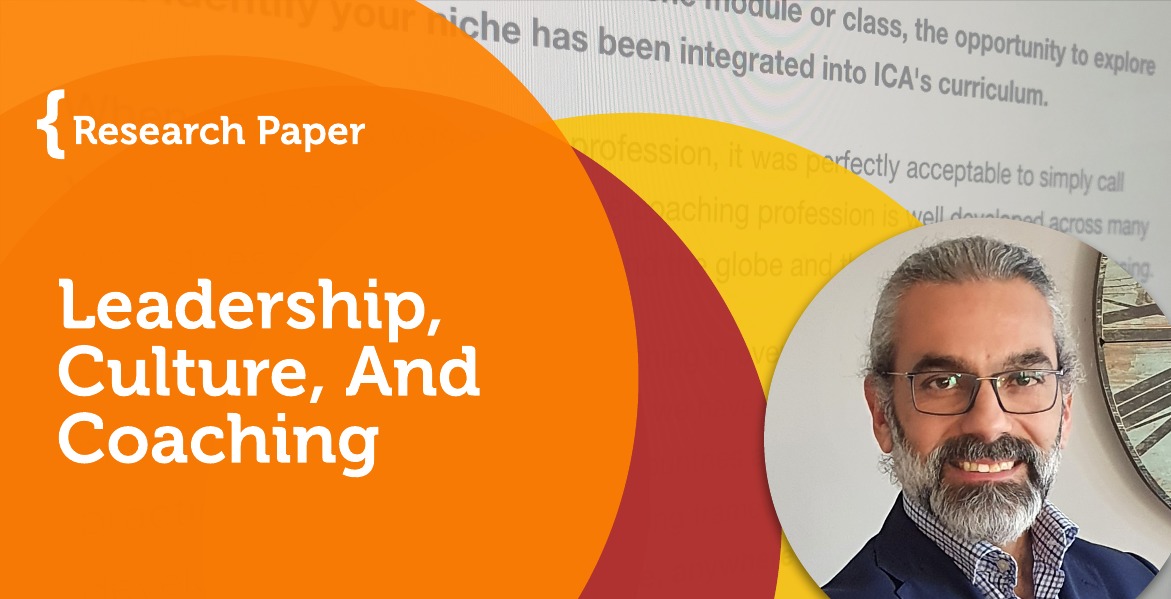
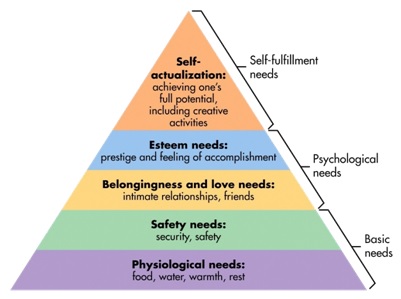
 Dependent
Dependent